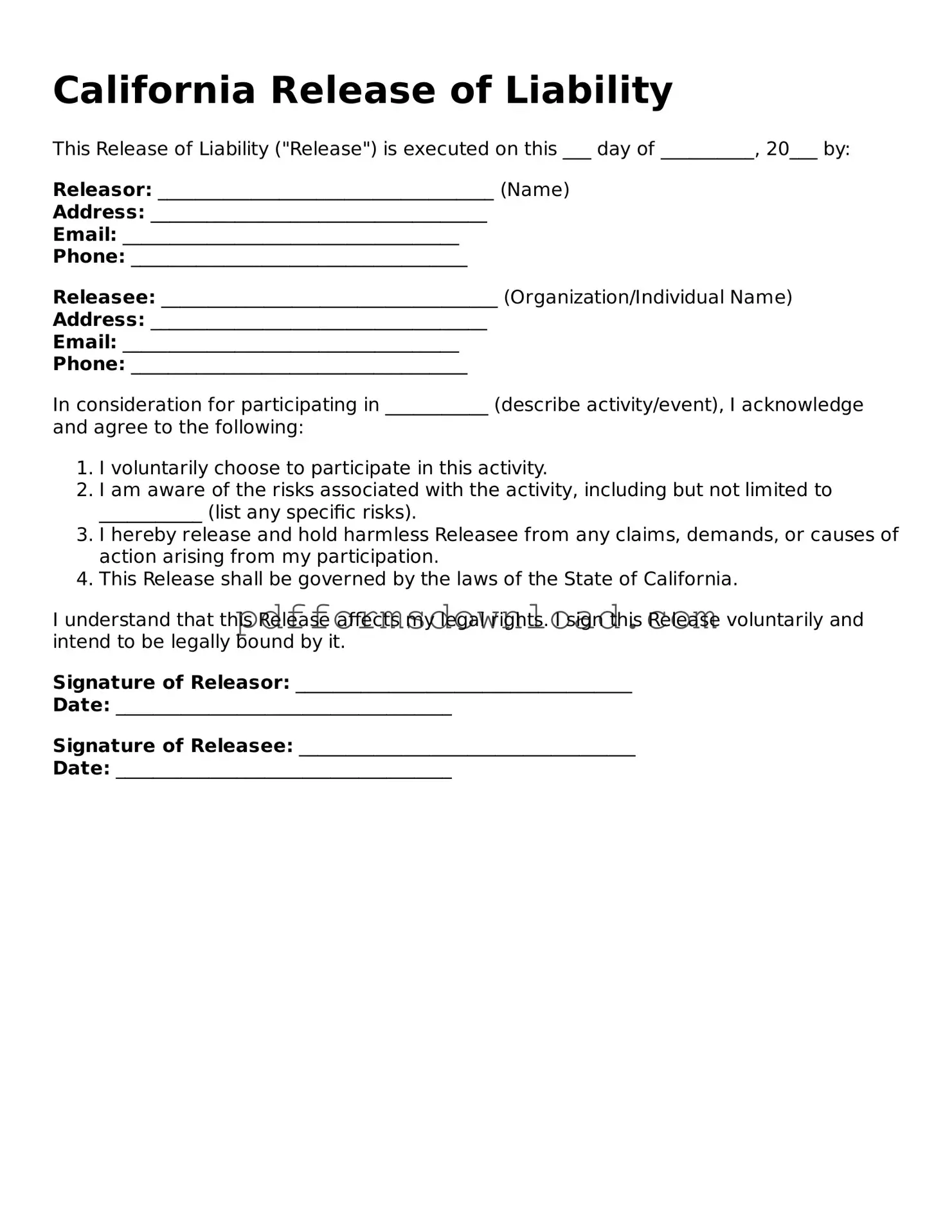What is a California Release of Liability form?
A California Release of Liability form is a legal document that protects an organization or individual from being held liable for injuries or damages that may occur during an activity or event. Participants sign this form to acknowledge the risks involved and agree not to hold the organizer responsible for any accidents or injuries that may arise. It is commonly used in sports, recreational activities, and events where there is a potential for risk.
Who needs to sign a Release of Liability form?
Typically, anyone participating in an activity that involves a risk of injury should sign a Release of Liability form. This includes participants in sports events, outdoor adventures, workshops, and other activities organized by individuals or businesses. If the participant is a minor, a parent or legal guardian must sign the form on their behalf.
Is a Release of Liability form enforceable in California?
Yes, a Release of Liability form can be enforceable in California, provided it meets certain legal requirements. The form must be clear and specific about the risks involved. It should also be signed voluntarily by the participant without any coercion. However, there are limitations. For example, the form cannot protect against gross negligence or willful misconduct.
What should be included in a Release of Liability form?
A well-crafted Release of Liability form should include several key elements. It should clearly state the nature of the activity, outline the risks involved, and include a statement where the participant acknowledges those risks. Additionally, it should contain a clause that releases the organizer from liability and a space for the participant's signature and date. If applicable, include a section for a parent or guardian’s signature for minors.
Can a participant revoke their consent after signing the form?
Once a participant signs a Release of Liability form, they generally cannot revoke their consent simply because they change their mind. However, if the participant can demonstrate that they were misled or coerced into signing, they may have grounds to contest the form's enforceability. It's crucial for participants to read and understand the form before signing it.
What happens if an injury occurs despite signing the form?
If an injury occurs, the Release of Liability form may provide some protection to the organizer, but it does not guarantee immunity from all claims. The circumstances surrounding the injury will be examined. If the organizer acted negligently or failed to provide a safe environment, the form may not hold up in court. Each situation is unique, and legal advice may be necessary to navigate any claims that arise.
